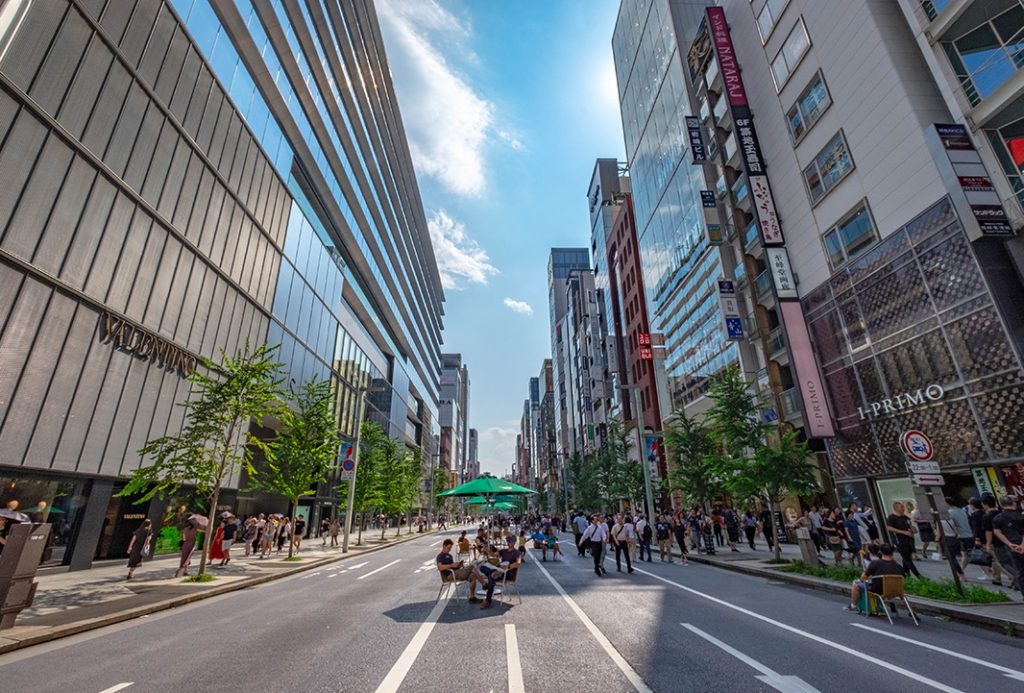Many people come to Tokyo for the bright lights of Shibuya and Shinjuku. The hustle and bustle, shopping, and spectacle of Tokyo’s primary transit hubs are an excellent introduction to the city. Historically, however, many of Tokyo’s dense urban areas were not formally a part of the city. They remained peripheral until the development of train lines in the late 19th century. If you want to get a taste of the city’s roots, you’ll have to make the journey into the center. This three-part tour will take you on a journey from the Imperial Palace through to the crimson corridors of Sensoji Temple. It offers an experience of old world charm, but because this is Tokyo, expect to see some hyper-modern spots along the way. This trek begins with a brief tour of the sleek shopping quarters of Ginza. You can find a map of the Ginza tour here.

A Trip to the Palace
When Tokyo, formally Edo, became the capital of Japan in 1603, the Tokugawa Shogunate held the reins of power. During this time, it was the Shogun, not the Emperor who occupied the grounds of the present-day Imperial Palace. Known at the time as Edo Castle, it remained under the control of the Shogunate until the Meiji Restoration in 1868. After construction, the Imperial Family took up residence in the castle, and it has remained the primary residence of the Emperor ever since. While it is not possible to enter the Palace or even the palace grounds on your own (excepting the occasions of the New Year’s greeting and the Emperor’s birthday), beginning a tour of central Tokyo with the Palace is a fitting way to start your trek.
From Tokyo Station on the JR Line, the palace is a ten-minute walk. You can take in the palace from the outside, and snap pictures of the moat or the Seimoishi Bridge. Tours of the palace grounds are available in Japanese and English. Interested individuals can make advance reservations through the Imperial Household Agency. Otherwise, you can turn around and head back down into the heart of Ginza.
Shopping in Ginza
In the 1920s and 1930s, Ginza was the trendy spot to shop and dine. Young people flocked to cafés during the day and writers and artists prowled back-alley bars at night. The rise of department stores and movie theaters also made the area a popular destination for shopping and leisure. While the area has become progressively more upscale with time, it retains much of its early 20th century charm.
From the Imperial Palace, you can travel south to the Tokyo International Forum. Uruguayan architect Rafael Vinoly designed the building, which resembles a large glass boat. The building’s towering glass walls are well worth a visit, as are the food trucks which gather outside. These offer a number of different Japanese and international cuisines.
Continuing south, you’ll find several shopping malls and department stores, along with big-name stores such as Uniqlo and Apple. If you’re a gear-head you’ll want to visit Nissan Crossing storefront, which offers a small exhibition of Nissan cars, including prototypes and concept cars. If you’re more interested in computers than cars, travel upstairs to the Sony Store. In addition to their line of consumer products, they regularly offer sneak previews of tech that’s still in development.
Exiting Ginza Stage Left
After you’ve got your fill of luxury and shopping in Ginza, you can continue your tour by following Harumidori Avenue southeast. Along the way, you will pass by the Kabuki-za Theater. This is the primary place to see the theater form in Tokyo. The theater was built in 1889 but has been rebuilt and renovated multiple times since. Most recently, the building was rebuilt and reopened in 2013.
If you’re interested in catching a glimpse of the bright costumes, elaborate sets, and fantastic narratives of kabuki theater, you can purchase cheap tickets for the highest tier of seating are on the day. Ticket prices are usually quite reasonable. The theater also provides English guides for otherwise befuddled foreign visitors.
Alternating between historic spots like the palace and the kabuki-za alongside the latest prototypes by companies such as Sony may cause you to feel like you’re tripping through time, so take a moment to collect yourself before continuing your tour of Old Tokyo.
Post by Japan Journeys.